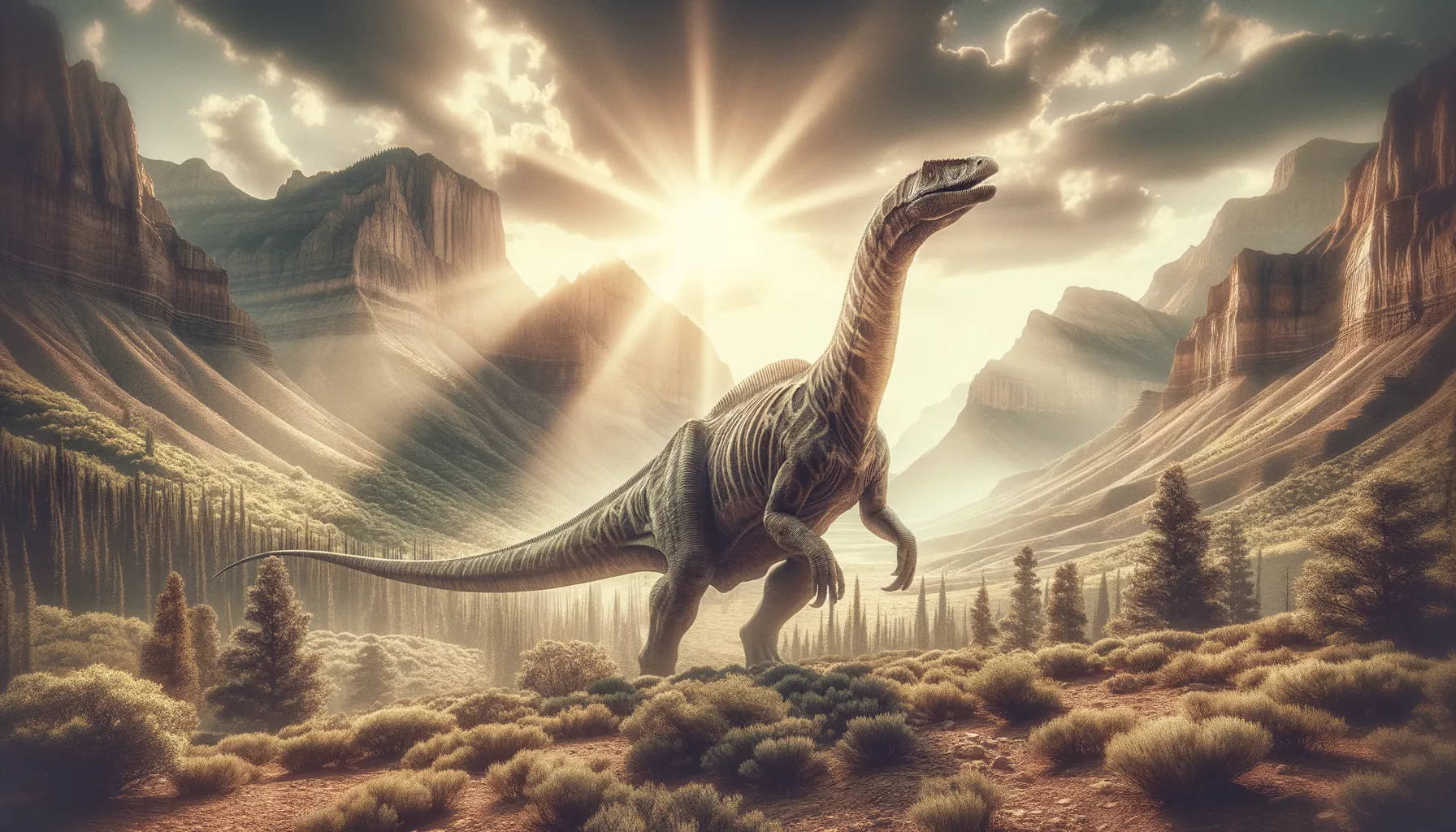
Dystrophaeus
Rediscovering giants from the Jurassic age.
Period
Jurassic
Length
Up to 12 meters in length.
Height
Around 4 meters tall.
Weight
Approximately 18,000 kilograms.
Dystrophaeus is a relatively lesser-known dinosaur from the Late Jurassic period. Its fossils primarily belong to a single long-necked dinosaur whose remains were found in Utah, USA. This dinosaur was part of the sauropod group, characterized by massive bodies and elongated necks, suited for browsing high vegetation. Its discovery has contributed valuable insights into the diverse ecosystems of the Jurassic era.
Diet
Dystrophaeus was a herbivore, primarily feeding on leaves, ferns, and other vegetation available in its environment. Its long neck enabled it to reach foliage high on trees or plants that other herbivores could not access.
Hunting
As a herbivore, Dystrophaeus did not hunt but foraged for foliage. It used its strong trunk and lengthy neck to access a variety of plants and leaves in its surroundings.
Environmental challenges
During the Jurassic period, Dystrophaeus faced challenges such as changes in climate and landscape. As environments transitioned from wetter to drier conditions, the availability of plant resources would have varied. Predation by large theropods was another challenge, requiring these herbivores to develop strategies for protection, such as forming groups.
Speed
Likely slow, suited for a large plant eater.
Lifespan
Estimated to be several decades.
First discovery
Discovered in 1859 by John Strong Newberry in Utah.
Fun Facts
- Dystrophaeus lived approximately 155 million years ago during the Late Jurassic period.
- It was one of the earliest known sauropods in North America, which means it had a long neck and tail like other famous dinosaurs such as Brachiosaurus and Diplodocus.
- The name Dystrophaeus means 'wearisome god,' reflecting the difficulty paleontologists had when they first uncovered its bones.
- Fossils of Dystrophaeus were first discovered in Utah's Rainbow Park in the 19th century, making it one of the earliest sauropod discoveries in North America.
- Dystrophaeus was a relatively small sauropod, estimated to be about 16 to 18 feet long—considerably shorter than later giant sauropods.
- Its fossils were uncovered during a geological survey by a team led by pioneering American fossil hunter John Strong Newberry in 1859.
- Dystrophaeus's discovery was significant because it demonstrated the diverse range of sauropods that once roamed North America.
Growth and Development
Dystrophaeus would have experienced significant growth from hatchling to adulthood. Like many sauropods, it likely grew rapidly in its early years to deter predators. The presence of certain bone structures suggests that this dinosaur matured over a few decades, achieving immense size as it developed.
Habitat
Dystrophaeus inhabited areas rich in plant life, such as floodplains, forests, and riverine environments. These settings provided ample food resources required for its gigantic size. The existence of large groups of sauropods in similar areas indicates that Dystrophaeus might have shared its habitat with various other genera.
Interaction with other species
Dystrophaeus likely coexisted with other dinosaur species, both predators, and herbivores. Its immense size would have deterred many predators, though interactions with smaller dinosaurs and mammals were possible. Competition for resources with other herbivores would have influenced its behavior and movement.
Natural lifespan
Dystrophaeus might have lived for up to 70-80 years.
Reproduction
As with many large dinosaurs, Dystrophaeus likely laid eggs, with multiple offspring hatching simultaneously. Its reproductive strategy would have involved nest-building in secure locations to protect its eggs from predators and environmental factors.
Social behaviour
Dystrophaeus might have lived in herds or groups, providing protection against predators and increasing foraging efficiency. Such social structure would have been beneficial, especially for raising young dinosaurs and safeguarding them in the early stages of their lives.
Fossil locations
Fossils of Dystrophaeus have been found mainly in the state of Utah, USA. The region has provided substantial evidence of diverse dinosaur ecosystems from the Jurassic period. The initial discovery of Dystrophaeus fossils has opened further research into the area's prehistoric biodiversity.
